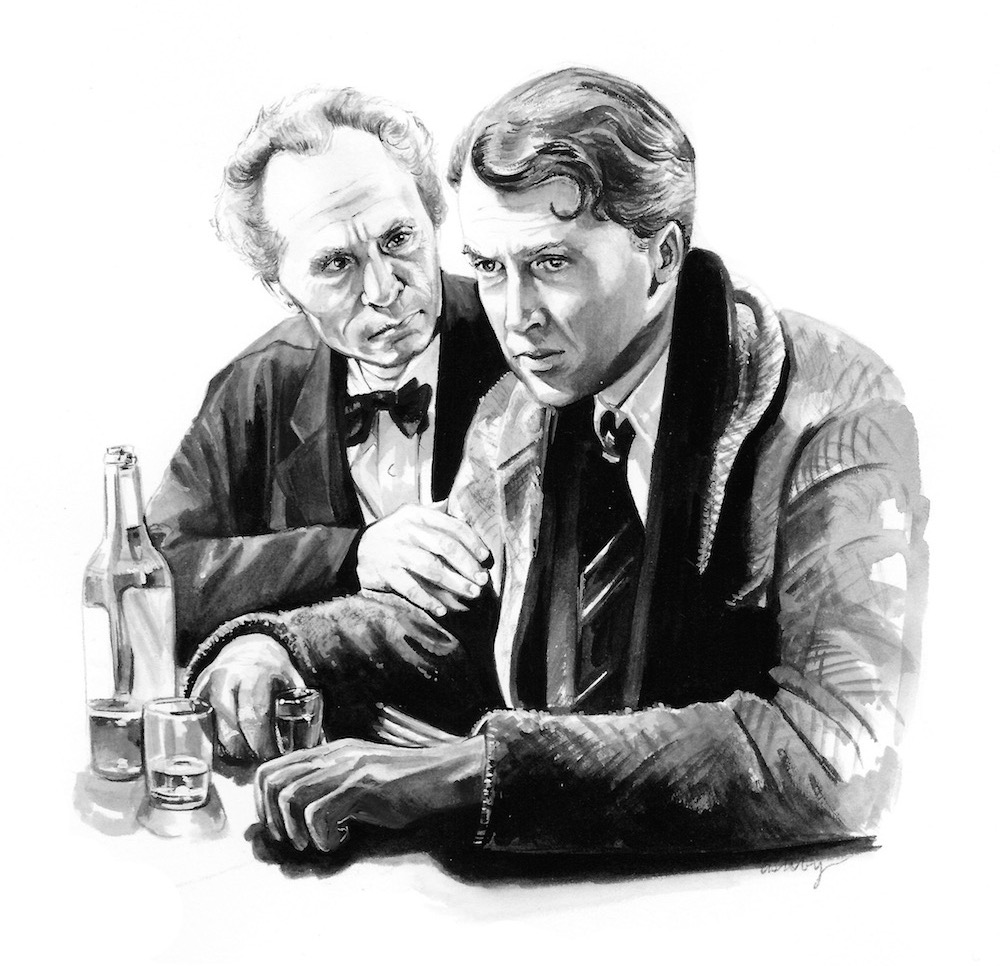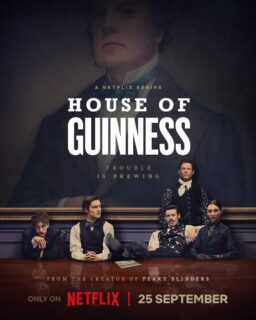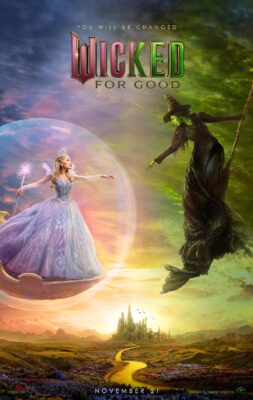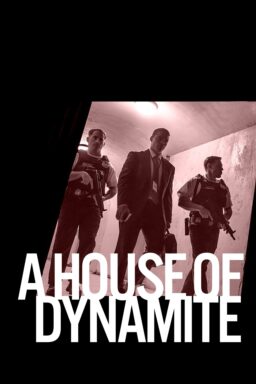We are pleased to feature an excerpt from the December 2016 edition of the online magazine Bright Wall/Dark Room, which is their first holiday-themed issue. In addition to Chad Perman’s piece on the Frank Capra classic, the issue also includes pieces on “A Christmas Story,” “Meet Me in St. Louis,” “The Holiday,” “Metropolitan,” “A Christmas Tale,” “You've Got Mail,” “The West Wing,” cheesy made-for-TV Christmas movies and more. The illustration above is by Brianna Ashby.
You can read previous excerpts from the magazine here. To subscribe to Bright Wall/Dark Room, or purchase a copy of their current issue, go here.
It’s easy to lose track of your life. All of us do it, in one way or another, locked up so tightly in our own heads—our own private little worlds—that we lose sight not only of The Big Picture, but of our own smaller pictures as well: our families, our friends, the things we set in motion, the lives we impact and influence on a daily basis. Losing sight of this, it’s easy to feel hopeless; for many of us it’s almost a default setting. Which is precisely why it seems necessary to watch It’s a Wonderful Life at least one time each year. Not because it’s aired annually on television every December, not because Frank Capra and Jimmy Stewart both consider it to be their best film, not even because the AFI once declared it the eleventh greatest American film of all-time. Instead, I’d suggest an annual viewing of this dark holiday fable simply because of the way it makes you feel once it’s over; the way it reminds you that your life matters, regardless of its shape or size; the way you interact just a bit differently with people (or at least, try to) for a few days after seeing it. Above all, you should watch it to remember your ripples.
Let me explain.
Dr. Irvin Yalom, a brilliant psychotherapist and writer, is, sadly, nearing the end of a long and distinguished career. As such, he’s turned his professional focus over the past few years towards death, and the long shadow it casts over every single aspect of our lives. How are we, the only creatures on earth aware of our own fragile mortality—no matter how well we live, how wonderfully we behave, how healthy we are—supposed to carry on with this awful knowledge? In the face of this, what is the point, ultimately, of anything that we do? How do those of us not comforted by the tonic of religion, soothed by the promise of a better world awaiting us after this one, confront our own mortality without being utterly paralyzed by it?
Yalom, an existentialist to his core, concludes, finally, that we’re each responsible for making our own meaning in this life, but that the way we ultimately endure is through our “ripples”:
“The fact that each of us creates—often without our conscious intent or knowledge—concentric circles of influence that may affect others for years, even for generations…[and] this effect we have on other people is in turn passed on to others, much as the ripples in a pond go on and on until they’re no longer visible but continuing at a nano level.”
This idea, that we leave behind something of ourselves everywhere we go, is Yalom’s defiant, life-affirming response to any who “might claim that meaninglessness inevitably flows from one’s finiteness and transiency.” Our lives mean something, despite the limitations of our time on earth, because our actions will outlast us. We ripple on.
Of course, George Bailey (Jimmy Stewart), the everyman hero at the heart of Frank Capra’s It’s a Wonderful Life, doesn’t exactly come to the idea of “ripples” on his own. In fact, it’s all but forced upon him following a botched Christmas Eve suicide attempt. Clarence, an angel-in-training attempting to earn his wings, rescues George from the raging waters he’s jumped into, and then proceeds to offer him a rather ingenious gift: the ability to see what the world would actually be like if he had never been born into it. For the remainder of the film, George, in essence, is made aware of his ripples by being shown their absence. The war hero brother who never makes it to the war to save the lives of other soldiers, because George wasn’t around to save him from drowning in a frozen lake as a boy; the quiet, lonely sadness of his wife, Mary, and her life without him in it; the scores of people screwed over by the town’s resident Scrooge, Mr. Potter, because George wasn’t around to stand up for them, to fight back and provide a better way of life for the folks of Bedford Falls through his tireless work at the Savings and Loan.
Seeing the stark reality of a world without him in it, George begins to truly understand, for the first time, that the life he had thought was worthless—due to his failure to live up to his dreams and potential—was actually worth more than he could ever know.
And, sure, your own life might not contain such large ripples—at least not yet—but that certainly doesn’t mean it doesn’t contain any. Think of the lives you’ve touched, just this year. Think of all the lives you still have left to touch.
Think about your ripples.
*
Of course, there’s another way to read It’s a Wonderful Life, a much more cynical one to be sure, but one that I suspect goes a long way toward explaining its massive appeal over the years.
Who among us can’t relate to a life not going as planned, to endlessly deferring dreams in exchange for a type of quiet domestic desperation, to making small concessions that eventually turn into an entire life you’d never really meant to have?
George Bailey dreams of a life perpetually out of reach, always right around a corner he can never quite round. He makes all the responsible choices, the safe ones, the necessary ones, and in exchange gives up nearly all of his youthful ambitions—an adventurous Man of the World becoming, instead, a Family Man stuck back in his old hometown, running the family business. It’s heartbreaking to watch. And worse, it happens to almost every single one of us, in one way or another.
But It’s a Wonderful Life assures us that it’s all still going to be okay. It assuages that nagging voice in the back of our heads that tells us we were meant for something greater, soothes that itching ambition and resulting disappointment at a life not fully lived. Looking at it this way, it’s not hard to see why so many people love and embrace this film. Who doesn’t want to feel better about all the things they never did? Who doesn’t want to think that all the compromises they’ve made along the way will wind up bringing them just as much happiness as the dreams they traded them in for? Thus, we flock to It’s a Wonderful Life because it’s our therapy, a culturally endorsed, holiday-approved balm for all the miseries and disappointments that pile up around us with each passing year.
So I guess the question becomes, then, why am I so personally drawn to the film? Why do I insist on watching it every single year? Is it the idea of Yalom’s ripples (I hope) or merely the band-aid the film applies to my own regrets (I fear)?
Well, maybe it’s both. Maybe I need to be reminded that my life matters. That among the day-to-day domestic life I lead—the job I give my time and energy to throughout the week, the wife I try to love and support as best I know how, the two children I give my all to raising day after day, year after year—there is an undercurrent, mostly outside my conscious awareness, of meaning, a myriad of ripples that extend out in ways I might never see. There’s a comfort in knowing or remembering that fact, something that elevates an average life into a necessary one, giving a purposeful shape to the quotidian bent of daily actions.
But at the same time, if I’m being honest about it, I have my share of regrets about some of the turns my life has taken. Not that I don’t love what it’s turned out to be—I do—but just that it’s not at all the life I’d envisioned for myself twenty years ago, when I was eighteen years old and ready to take on the world. I never made it as a musician or a writer or a filmmaker. I haven’t accomplished grand things, or made any kind of exceptional mark on the world. My life, while amazing to me in all kinds of ways, is still a small and quiet one, insignificant to all but a handful of people. And watching It’s a Wonderful Life each year does help me feel a bit more okay with that, more accepting of my limitations, and largely comfortable within them.
*
Regardless, make no mistake about it, It’s a Wonderful Life is a tremendously dark film. It trafficks in the language of tragedy, noir, even outright horror at times—in some existential respects, it’s not all that far removed from a film like The Seventh Seal, a point I’ve tried to argue with more than a few baffled people over the years. Sure, there’s a jubilant celebration in the final scene, a happy ending of sorts which takes up, literally, less than five minutes of the entire film’s running time, but in comparison to all the darkness that’s come before it—compromise, defeat, depression, a nearly successful suicide attempt by the film’s main character—there’s nowhere near enough joy in the rousing rendition of “Auld Lang Syne” that closes the picture to balance everything out.
It always amazes me how many people so wholly misunderstand It’s a Wonderful Life, regarding it as something nearly the exact opposite of what it actually is. That it’s a holiday staple, cherished by nearly everyone at this point, is even more puzzling. There is no Santa Claus here, no Winter Wonderland, no whimsy, and precious little ‘holiday spirit’. That it’s considered a Christmas film at all seems largely to do with the timing of George Bailey’s suicide attempt: a beaten down, desperate businessman, husband, and father jumps off a bridge on Christmas Eve.
Merry Christmas, eh?
That George finally decides his life is worth the living—after Clarence’s inspired this-is-your-life-without-you tour—and rushes home to hug his wife and kids and celebrate the holiday with his friends and family is certainly a nice touch, but hardly one that would justify its status as an Official Christmas Movie. In fact, for decades it wasn’t; if not for a clerical error in 1974, it might well be mostly forgotten today. Had its copyright been properly renewed that year, It’s a Wonderful Life would never have ended up in the public domain—an oversight that allowed any television station in the country to air it royalty-free for the next twenty years. As such, the film was programmed endlessly throughout the holiday season by most major stations (before NBC obtained exclusive rights to it in 1994) and was distributed by more than one hundred companies, forever cementing its association with Christmas. It was a strange twist of fate for the film: commercially unsuccessful at the time of its release, and not much thought about for the next three decades, it ultimately became one of the most endearing, iconic American movies ever made—a fact which surprised even Capra himself, who later remarked, “It’s the damnedest thing I’ve ever seen. The film has a life of its own now and I can look at it like I had nothing to do with it. I didn’t even think of it as a Christmas story when I first ran across it. I just liked the idea.”
Still, in the end, we gather around our televisions every December, we hold our loved ones close, and we let George Bailey’s triumphs and failures become our own. We embrace both the film’s existential anxiety and its inspirational resolution. We think about our ripples and our regrets, and how a full life is necessarily full of both. We accept, all over again, that this is just how it works. And maybe, just maybe, we reset ourselves a bit, armed anew with the knowledge that all of this matters, somehow. Because to live in this world, for even a single day, changes everything.











